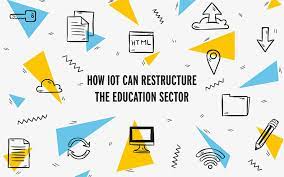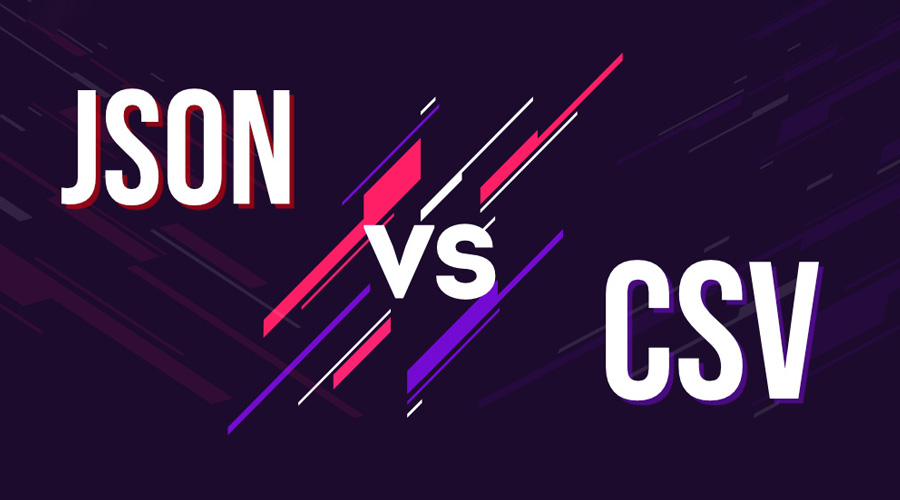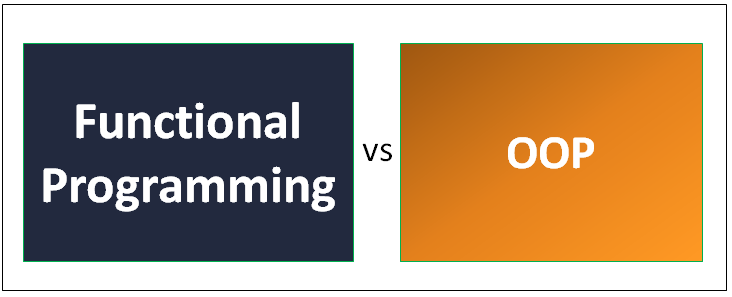8 Best Applications IoT in Education: The Future of IoT Schools
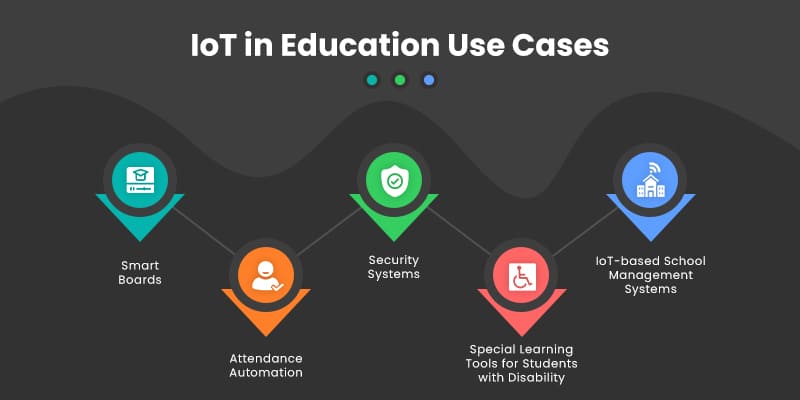
Applications for IoT in education enhance attendance management, safety measures, and inclusive learning for students with disabilities and facilitate educational connectivity through mobile devices and tablets.
The purpose of the Internet of Things in education is to enhance learning experiences through interconnected devices and systems, fostering personalized and efficient learning environments.
What Should You Know About IoT in the Education Industry?
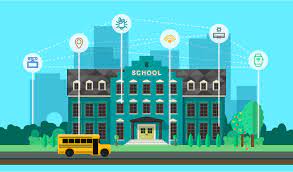
IoT in the education industry has the potential to revolutionize the way education is delivered, making it more personalized, interactive, and efficient. The purpose of the Internet of Things in education is to enhance learning experiences through interconnected devices and systems. Here are some key points mentioned:
- Real-time communication and collaboration: IoT devices like intelligent whiteboards, tablets, and laptops facilitate real-time communication and collaboration between teachers, students, and peers.
- Personalized learning: IoT devices enable the collection of data on students’ learning styles, progress, and areas of difficulty. This information can be used to create customized lesson plans and tailored learning experiences.
- Engaging and interactive lessons: IoT devices such as interactive whiteboards and tablets allow teachers to create more engaging and interactive lessons, keeping students interested and motivated.
- Efficient resource management: IoT in education systems helps teachers and administrators monitor and manage classroom resources like textbooks and materials more efficiently.
- Enhanced safety and security: IoT devices enable schools to monitor and secure their buildings, grounds, and buses, ensuring the safety and well-being of students and staff.
- Streamlined administrative tasks: IoT systems can streamline administrative tasks such as attendance tracking and grading, freeing up more time for teaching and learning and allowing educators to focus on their core responsibilities.
How does IoT Technology help in Education?
IoT technology simplifies the connection between teachers and students, enabling seamless collaboration regardless of their physical locations. It also eliminates geographical limitations, enabling students from diverse regions to connect and work together in real-time.
Here’s a reorganized version of the points:
- Connectivity and Collaboration: IoT technology enables seamless connectivity between teachers and students regardless of their location, breaking down geographical barriers and facilitating real-time collaboration.
- Personalized Learning: The IoT facilitates personalized learning by tailoring educational experiences to individual students’ needs and interests, ensuring they receive the necessary support and engagement.
- Dynamic Learning Environment: The IoT creates a dynamic and engaging learning environment that promotes active learning, problem-solving, and increased student participation, leading to better learning outcomes.
- Resource Management: The IoT optimizes resource utilization by monitoring and managing school facilities, equipment, and materials, reducing waste, and improving overall efficiency.
- Safety and Security: IoT in education enabled GPS tracking systems to enhance safety by monitoring the location and movement of school buses, ensuring the well-being of students during transportation.
- Time and Administrative Efficiency: The IoT automates administrative tasks such as scheduling and communication, freeing up time for teaching and learning while improving overall efficiency in the education system.
Schools can enhance connectivity, personalize learning experiences, create engaging environments, optimize resource management, improve safety measures, and increase administrative efficiency by leveraging IoT technologies in education.
How is the Internet of Things being applied in Education?
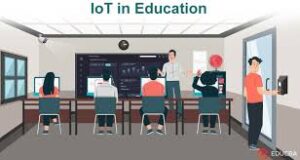
IoT in Education
The education sector, after gaining internet access, is now embracing the integration of connected devices, particularly IoT, which is set to revolutionize eLearning. Students, instructors, and administrators can harness the advantages of this advanced technology to enhance the educational process, making it more engaging and interactive.
To further enhance this knowledge, education requires technology and learning to progress. Technology has introduced digital reading and successfully implemented digital books in classrooms. With the strong support of the IoT in education sector has experienced significant success.
If you’re a principal aiming to elevate your institution, exploring IoT applications in education can be beneficial. Here are five applications of IoT in the education sector:
- Smart Boards:
Interactive whiteboards, known as smart boards, project subject images and allow teachers and students to interact with them. Smart boards enable teachers to simplify complex concepts, showcase infographics, and utilize tutorial videos, making subjects like mathematics more comprehensible and time-efficient.
- Attendance Management:
IoT in education enables accurate attendance tracking, eliminating human errors. Real-time location tracking of hostel residents enhances safety and quality of life. With an IoT-based attendance system, calculating attendance and generating reports on regularity, punctuality, and personality become effortless. In the event of a student’s absence, instant electronic notifications can be sent to parents, ensuring safety measures.
- Enhanced Safety Measures:
The IoT in education, devices such as emergency indicators, audio enhancers, Wi-Fi clocks, and notifications for the hearing impaired contribute to improved security. IoT sensors can quickly detect and alert authorities in case of emergencies like short circuits or individuals getting stuck in elevators.
- Inclusive Learning for Disabilities:
IoT technology facilitates inclusive education by providing tools for students with disabilities. Connected gloves and tablets can translate sign language into verbal speech, enabling students to learn and communicate effectively. The capability to convert sound into written language is particularly impressive.
- Mobile Applications and Tablets:
IoT experts have successfully shifted the excessive focus on gadgets for gaming and social networking to educational themes. Mobile applications and tablets equipped with IoT technologies allow students to connect with individuals worldwide who share similar goals and interests, fostering collaboration and learning opportunities.
Application of IoT for schools:
The impact of IoT (Internet of Things) on schools is significant and holds immense potential for transforming the education landscape. IoT in schools offers numerous benefits, including enhanced learning experiences, improved efficiency, safety and security measures, and data-driven decision-making. As technology continues to evolve, IoT in education holds a promising future for transforming education by personalizing learning, integrating AI and immersive technologies, and creating connected smart campus ecosystems. Here’s an explanation of the uses, benefits, and future implications of IoT in schools:
- Uses of IoT in Schools:
The IoT in education can automate attendance tracking using smart sensors or wearable devices, eliminating manual processes and improving accuracy. IoT enables interactive and connected classrooms through smart boards, digital learning resources, and IoT-enabled devices for enhanced teaching and learning experiences.
IoT-based systems can monitor school premises, detect emergencies, provide real-time alerts, and ensure the safety of students and staff. IoT technologies can track and manage school assets, such as equipment, books, and supplies, optimizing their utilization and reducing loss or theft.
IoT sensors can monitor and control factors like temperature, air quality, and energy consumption in classrooms, promoting a conducive learning environment.
- Benefits of IoT in Schools:
IoT in education enables personalized and interactive learning, automates administrative tasks, enhances security, provides valuable data insights, and fosters collaboration among students, teachers, and parents. It creates immersive and customized learning experiences, frees up time for teaching, ensures a safe environment through real-time monitoring, and empowers educators with data-driven decision-making. IoT facilitates seamless communication and remote learning.
Future Implications of IoT in Education:

